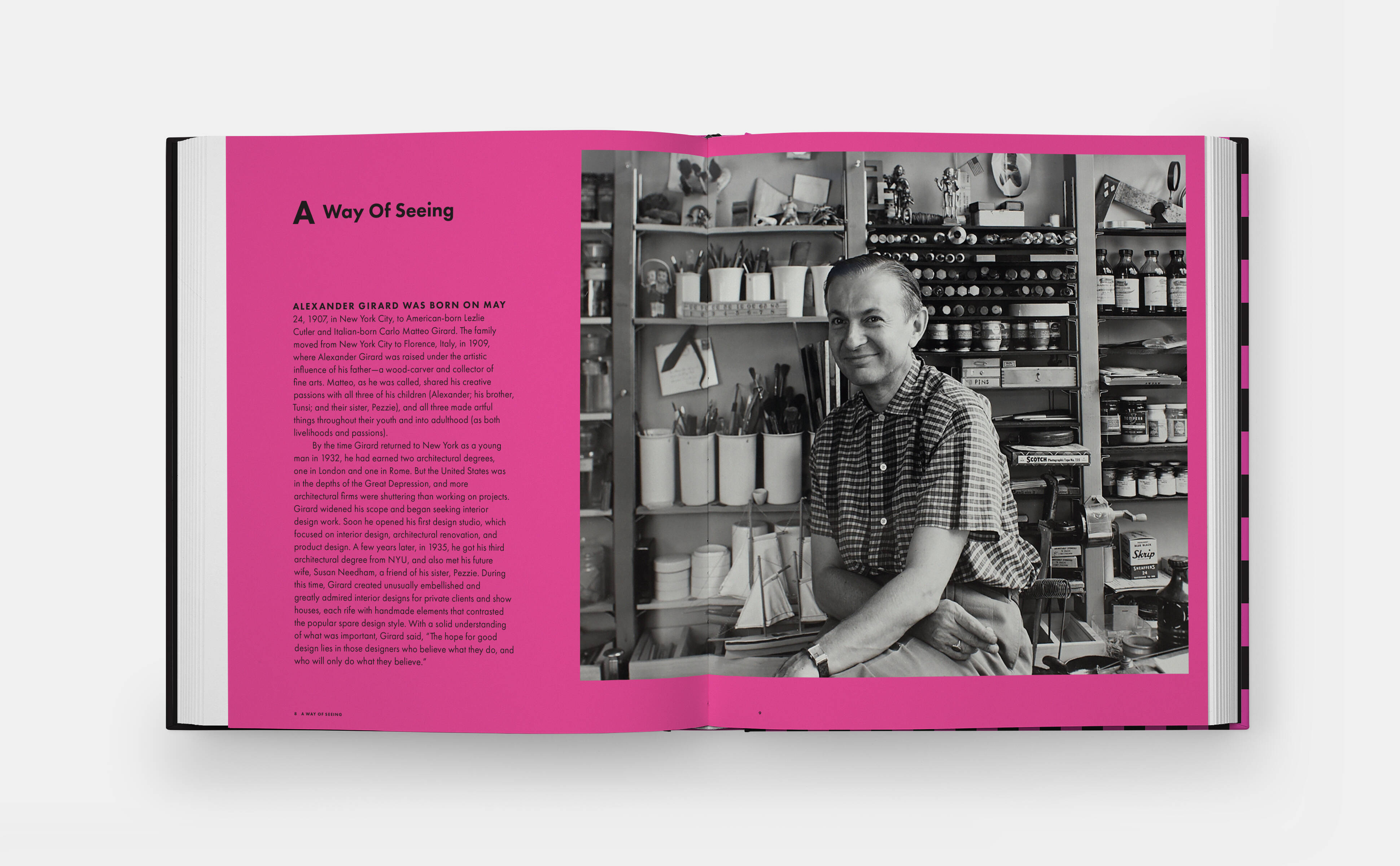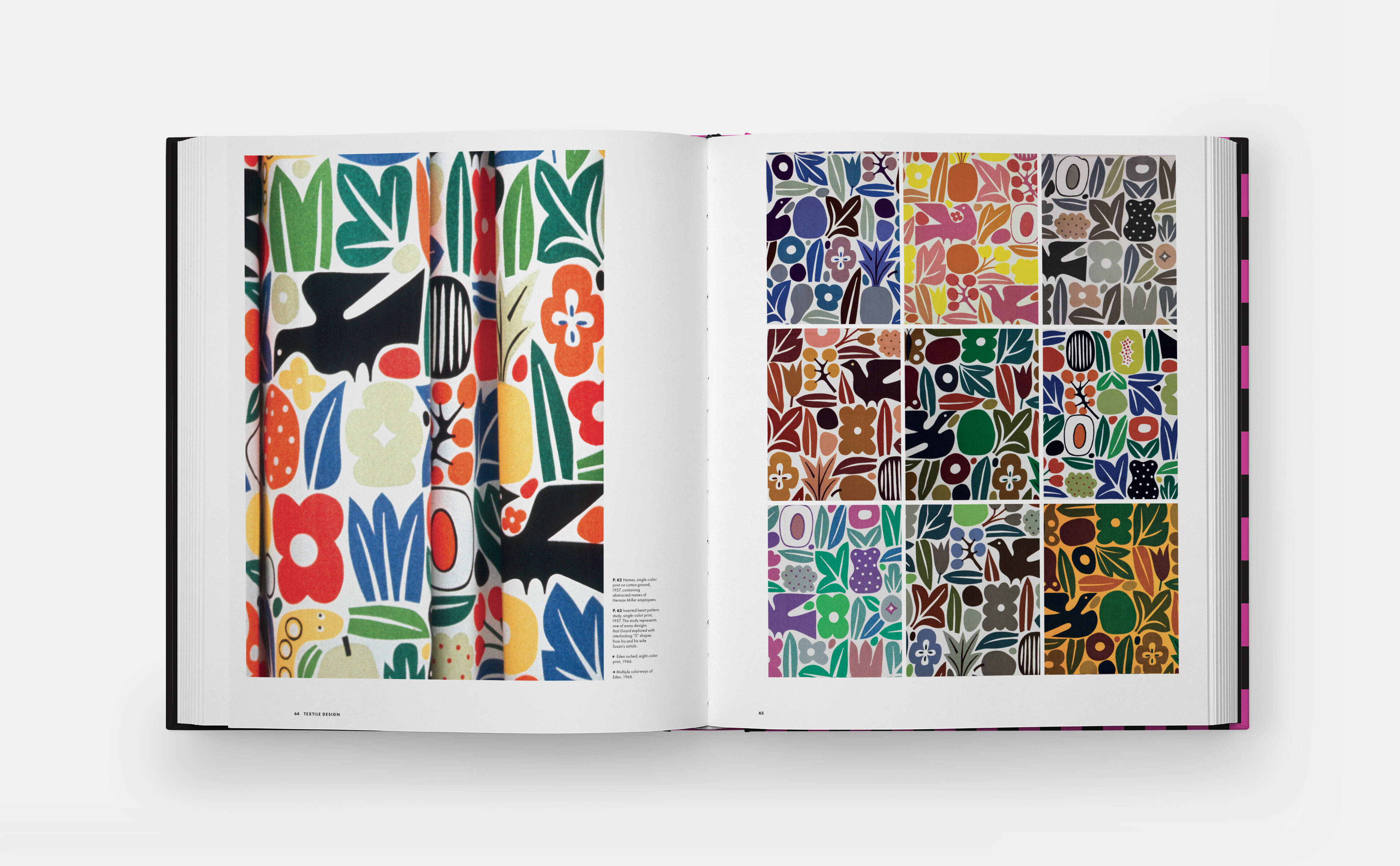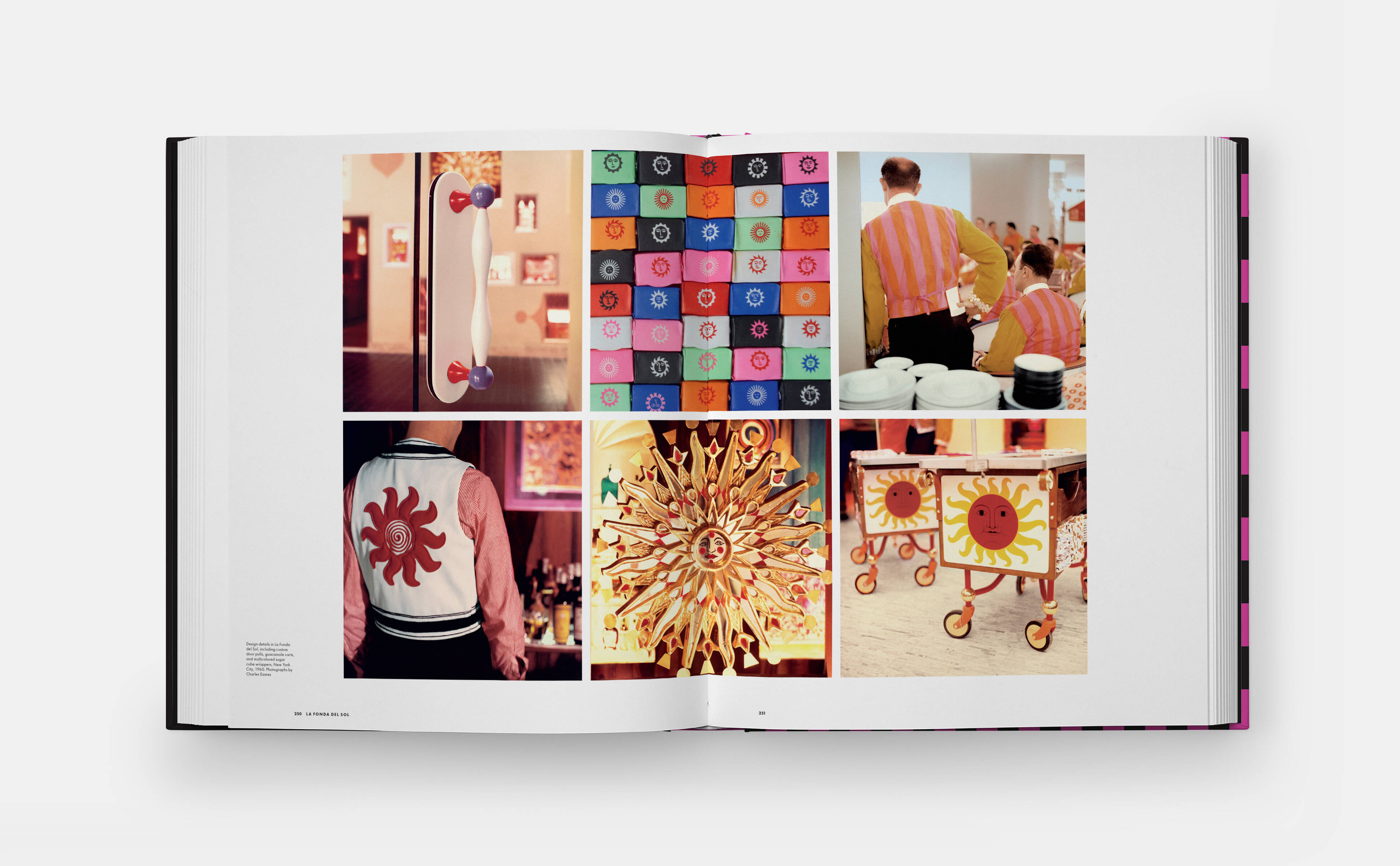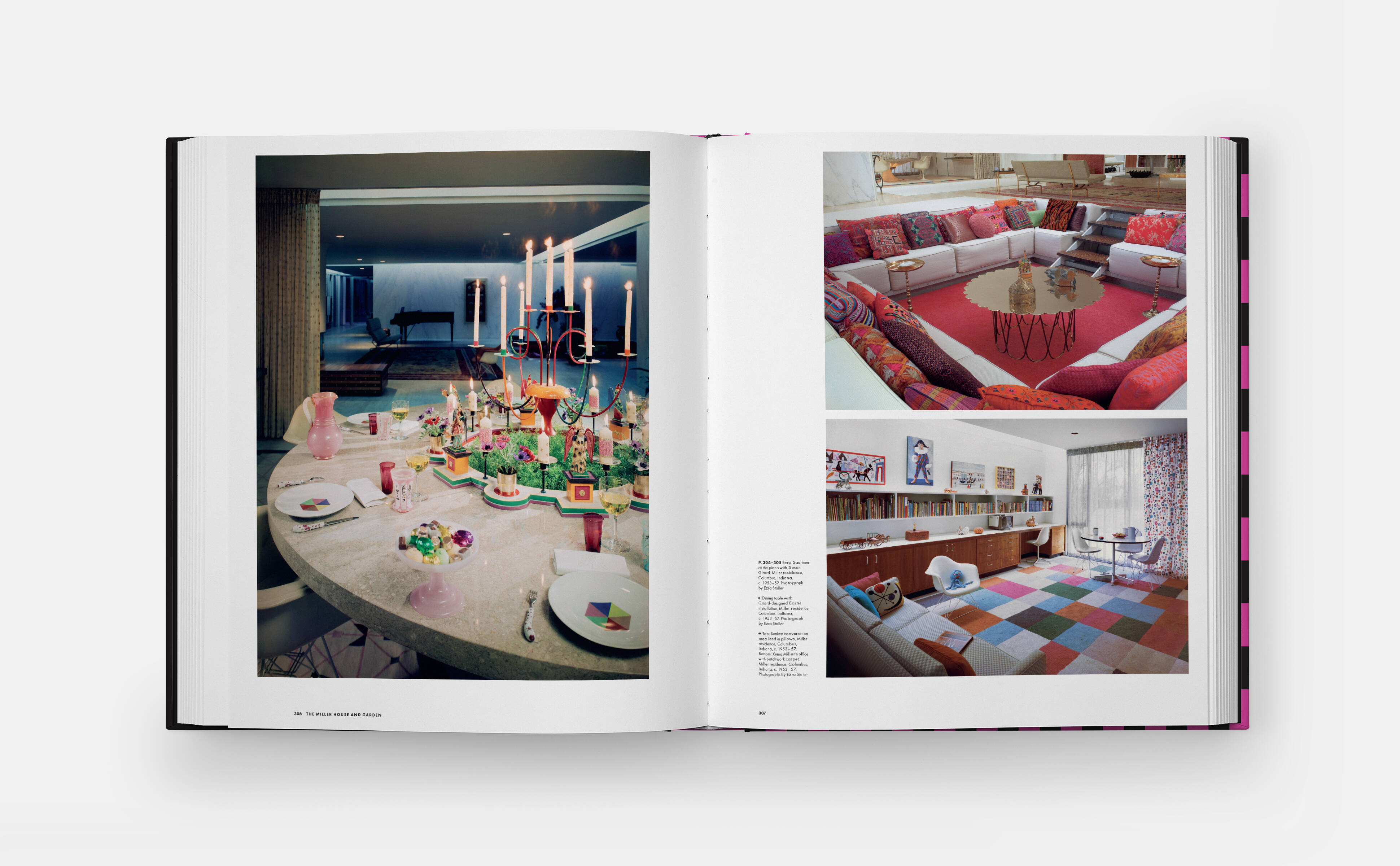
The story behind Alexander Girard's wooden figures and more
Our new book, Alexander Girard: Let The Sun In, focuses on the designer's work with George Nelson, Charles & Ray Eames and other mid-century modernists
The picture above is from our new book, Alexander Girard: Let The Sun In, and depicts a group of the folkloric wooden figures the designer is perhaps best known for among modern day house proud urbanites.
Born in 1907 in New York City, raised in Florence, Italy, and educated in the UK, Alexander Girard, affectionately known as ‘Sandro’ to his friends and family, was one of the leading figures of mid-century American design.
 A spread from Alexander Girard: Let The Sun In
A spread from Alexander Girard: Let The Sun In
Although he originally studied architecture, Girard’s work spanned many disciplines including textile design, graphic design, typography, illustration, furniture design, interior design, product design, exhibit design, and architecture. He was also one of the world’s foremost collectors of folk art, the influence of which can be seen in many of his designs – particularly those in our picture above.
But in all his work, Girard took care to customise and personalise his designs, creating work that enlivened the living and working environments in which they were experienced. As he once said, "Art is only art when it is synonymous with living."
 A spread from Alexander Girard: Let The Sun In
A spread from Alexander Girard: Let The Sun In
Organised by discipline, our vibrant new monograph, by Todd Oldham and Kiera Coffee, covers the full breadth of Girard’s prolific and highly original output. It begins with his textile designs where he favoured abstract forms and geometric patterns that moved effortlessly between chic, understated designs full of subtle colour and texture, to intensely vivid designs that popped with super bright tones.
For many years he led the Herman Miller textile department where he worked with George Nelson and Charles & Ray Eames, and designed, coloured, and drew hundreds of patterns, many of which are still popular and available today.
The book moves into the highly diverse range of work Girard undertook for commercial businesses. He was hired by Detrola to design radios and turntables, but was soon redesigning their offices, cafeteria, and even the factory itself. He rebranded Braniff International Airways and designed the La Fonda del Sol restaurant in New York.
 A spread from Alexander Girard: Let The Sun In
A spread from Alexander Girard: Let The Sun In
Despite all this, the thought of a fixed or finished interior design seemed alien to Girard, and his own living spaces were in a state of constant change, deliberately designed to respond to seasons and new ideas.
He famously said, “An interior design is really a slow-motion movie of junk changing position.” In addition to customising his own living spaces, he also designed interiors for many private clients in Grosse Point, Michigan; Columbus, Indiana; and Kansas City, Kansas, to name but a few. Many of these homes are still revered today, some of them even landmarked, including The Miller House, completed in 1957, which featured a then-radical sunken conversation pit as the centrepiece of its living room.
 A spread from Alexander Girard: Let The Sun In
A spread from Alexander Girard: Let The Sun In
Girard also came up with a checklist of attributes and aspirations, each of which defined, for him, the facets of modernity. These included: ‘Let’s believe in ourselves’, ‘Don’t live in the past’, and ‘Let the Sun In’, the mantra from which our new book takes its title.
Take a closer look at it here and look out for a series of stories focusing on aspects of this influential and much-loved designer’s life and career (including those figures above).
